I have two points (let's call them pointA and pointB) of type SCNVector3. I want to draw a line between them. Seems like it should be easy, but can't find a way to do it.
I see two options, both have issues:
Use a SCNCylinder with a small radius, with length |pointA-pointB| and then position it/rotate it.
Use a custom SCNGeometry but not sure how; would have to define two triangles to form a very thin rectangle perhaps?
It seems like there should be an easier way of doing this, but I can't seem to find one.
Edit: Using the triangle method gives me this for drawing a line between (0,0,0) and (10,10,10):
CGFloat delta = 0.1;
SCNVector3 positions[] = { SCNVector3Make(0,0,0),
SCNVector3Make(10, 10, 10),
SCNVector3Make(0+delta, 0+delta, 0+delta),
SCNVector3Make(10+delta, 10+delta, 10+delta)};
int indicies[] = {
0,2,1,
1,2,3
};
SCNGeometrySource *vertexSource = [SCNGeometrySource geometrySourceWithVertices:positions count:4];
NSData *indexData = [NSData dataWithBytes:indicies length:sizeof(indicies)];
SCNGeometryElement *element = [SCNGeometryElement geometryElementWithData:indexData primitiveType:SCNGeometryPrimitiveTypeTriangles primitiveCount:2 bytesPerIndex:sizeof(int)];
SCNGeometry *line = [SCNGeometry geometryWithSources:@[vertexSource] elements:@[element]];
SCNNode *lineNode = [SCNNode nodeWithGeometry:line];
[root addChildNode:lineNode];
But there are problems: due to the normals, you can only see this line from one side! It's invisible from the other side. Also, if "delta" is too small you can't see the line at all. As it is, it's technically a rectangle, rather than the line I was going for, which might result in small graphical glitches if I want to draw multiple joined up lines.
